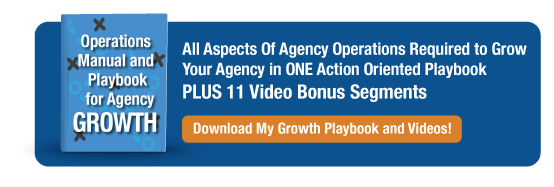 As agency owners, continuously learning what’s going on in our industry, what’s working, what’s not and what the innovative thinkers are planning keeps me and my agency on the cutting edge of marketing, sales and revenue execution.
As agency owners, continuously learning what’s going on in our industry, what’s working, what’s not and what the innovative thinkers are planning keeps me and my agency on the cutting edge of marketing, sales and revenue execution.
None of us can get to every conference, but when I have the pleasure of attending one of the year’s best conferences, I like to share those experiences with all of you.
I recently returned from one of the best conferences, Sirius Decision’s Annual Summit in Austin Texas. This is my second time attending and our agency’s third. This is the first time we exhibited. What I love about this conference is the high level of attendee (CEOs, CMOs, and VPs of both marketing and sales) and a heavy focus on technology solutions.
What I also love about this conference is the level of thought leadership shared by the Sirius Decisions team. If you don’t know this company, I like to refer to them as the Gartner of sales and marketing.
What I also love about this conference is the general lack of agencies attending or exhibiting. This allows us to stand out in a crowd of technology options and position us as an agency who can help deliver and as an agency who can help figure out their technology requirements, install the tech stack and help them optimize the technology to deliver results.
This year their focus was on sales and marketing alignment, sales operations and agile sales. All three of these elements now presented as KEY to driving revenue.
Marketing and Sale Alignment
The first component is going to seem obvious to most of us. We’ve been preaching the importance of aligning both sales and marketing since we wrote Fire Your Sales Team Today! and introduced the concept of the Revenue Department back in 2012, almost seven years ago.
HubSpot supported this alignment with the introduction of their CRM and the alignment of their software into a single revenue generation platform. Most agency owners have experienced first hand the frustration associated with misaligned marketing and sales teams.
Marketing is publishing one message, but sales tells their contacts something different. Marketing creates the tools they think sales needs and sales never uses them. Marketing generates leads and sales is unable to close them.
Unfortunately, these are real scenarios that, as agency owners, we see in our clients day in and day out.
As strategic advisors, consultants and thought leaders, we need to do our best to help our clients create the alignment between marketing and sales regardless of where our services start or stop.
In fact, today’s buyer journey is so intertwined, starting with marketing, rolling into sales, bouncing back to marketing again and ultimately ending up in sales that these two teams cannot be successful in driving revenue for any organization if they are not perfectly aligned.
Sales Operations
Sales operations is a more recent concept. Google sales operations and you get a January 2018 post from SalesHacker. I’m a big fan of these guys. You should check them out.
They define sales operations as the unit, role, activities, and processes within a sales organization that supports, enables, and drives front line sales teams to sell better, faster, and more efficiently.
Square 2 recently wrapped up a sales enablement engagement with one of our large professional services clients. As we were getting ready to deliver the final recommendations and action plan, they connected us with their Sandler Sales Consultant.
Initially it was slightly awkward. What was he supposed to be doing and what did they expect from us? He had been coaching and consulting with them for two years. Why didn’t he do any of the work we were now delivering?
Then it occurred to me that he was doing sales coaching and sales consulting, while we were doing sales operations work. Sales operations is consistently missing from almost all our client’s sales execution.
When I reflected on our engagement with them, we were providing training, software tools, and engagement techniques. But perhaps more than anything else, sales operations brings a system to selling. This often overlooked and sometimes under-accounted for effort uses data to drive strategy, best practices to guide training, and technology to hack success.
This thinking provided the perfect segmentation for us to work with the Sandler Sales consultant in a collaborative way. While he focused on coaching the team to be better at sales execution, we focused on installing the game plan, process, metrics tracking and tools to drive the overall process.
Sales Has To Be Agile Too
First, there was agile software development, then agile marketing and now agile sales. What do we mean by agile sales?
In the traditional world of sales, selling methodologies often included a rigorous process of prospecting, discovery sessions, and a flurry of emails, phone calls and dinners that were chalked up as “relationship building” events.
But in today’s modern sales age, traditional methods on their own can no longer cut it. According to CSO Insights, only 57% of sales reps hit their quotas with the average company coming at 80% of the revenue plan.
As we look at how marketing has evolved, it's not hard to see that sales has evolved too. Many of the data-driven decisions that now help us make quick changes to marketing campaigns can also be applied to sales execution.
Do you have a client who is not closing at a high enough rate? Look at the end of their buyer journey and recommend adjustments that can be installed in days, not months. Do you have a client that is not driving enough sales opportunities from your sales qualified leads? Look at the quality of those leads, the follow-up on those leads, the content the sales team provides prospects and the conversations that content is creating.
Data and visibility into the sales process allows you to recommend small changes that can be installed quickly, which if done frequently enough can produce big results that have a major impact on revenue in a much shorter timeframe than previous approaches to sales improvement projects.
It’s these kinds of revenue generating improvements that drive high levels of client satisfaction.
Here are a couple of additional concepts that are required for sales to be agile.
Data Driven
What transformed the software development industry was the ability to get user feedback instantly and make development decisions based on that user feedback. Now minimal viable product meant getting something done and out, grabbing user feedback and making changes based on that feedback quickly.
Instead of waiting years for something to be perfect, software teams published their newest version and made live adjustments to it based on real customer feedback.
Marketing has become a similar practice. Instead of waiting months for a huge new website, get a minimal viable site up quickly, get visitor feedback and work on the site every single week.
Sales can work in a similar way. Create a process, build the tools and train the sales team. Then work closely with them on the execution, track the performance data, get feedback from the field and iterate all those components over time. The business outcome is better, faster results, because the changes are driven by your prospect’s behavior and data NOT internal opinions or perspectives on hypothetical process changes.
Set it and forget it. That used to be how people managed their sales process. In some cases, an existing sales process might be 10 years old. Those days are over. At Square 2, we iterate our own sales process almost every single week based on prospect feedback, data from our CRM and insights from our team executing the process.
You should be doing something similar for your clients and that’s where sales operations become critical.
Prospect/Customer Alignment
Today, your clients can’t have a sales process that allows their reps to do whatever they want. Their sales process must be based on what the prospects and customers want and or need.
Instead, a client’s sales process must be designed to find out early whether there is alignment between what their prospects want or need with what they have to offer them. It has never been more important to decide that there is NOT a fit in the very first call or conversation.
Some of the best sales processes we’ve designed for clients are specifically built to disqualify prospects early so sales reps spend quality time with their best prospects and their best opportunities to drive revenue. The efficiency of the sales process is incredibly important.
Then the rest of the process needs to be strategically designed to align perfectly with the buyer journey. Today more people are involved in the purchase decision. HBR says 6.8 people on average. How is your clients’ sales process designed to proactively engage multiple people? How is it designed to identify them? How is it designed to align them around their solution?
Your clients must understand their specific prospects’ buyer journey, and, in some cases, you might have different prospect buyer journeys based on industry, role, product or service. These are as unique as DNA and should be treated accordingly.
Process and Tools
HubSpot recently reported that companies in North America are already spending more than $15B on sales acceleration tools and HubSpot’s own Scott Brinker shows that there are now over 7,000 marketing and sales tech tools.
There are plenty of options when it comes to sales software, but companies are clearly uncertain which tools to purchase, how to deploy them, what to expect and how to optimize their performance to drive business results.
HubSpot also reported that only one-third of a rep’s day is actually spent selling, with most of their time being allocated to admin work or CRM data entry.
This is not efficient and this is not what you want. There are processes, systems, methodologies and software tools that make your client’s reps highly efficient and much more effective.
In our experience, most sales organizations are looking at software simply from the CRM perspective. If they have one, they’re done. That couldn’t be farther from the correct way to tackle this challenge. Today there are many different sales acceleration software tools that need to be worked into the agile approach to sales and more specifically handled by the sales operations team.
If you want to take a more agile and iterative approach to sales with your clients you’ll need to help them build a sales process, documented on paper, and built into their CRM. Then you’ll have to train the sales team on each step. You’ll also need to map their prospect buyer journey and then guide them on what additional software will help their sales team execute as efficiently as possible.
For example, can follow up emails be automated? They can and they can be highly personalized. Can conversations be captured and analyzed by software so that the next steps and content offers can be suggested to reps in real-time? Yes, they can! Can leads be scored and then the process directed by those scores ensuring sales reps spend the most time with your best opportunities? Yes, they can!
Software alone doesn’t generally solve all your client’s challenges, but combined with people and process, you can make major improvements in all the key sales metrics, specifically sales cycle and close rate.
These tools also give you the data you need to make fast decisions, to iterate quickly based on data and drive sales performance improvement in weeks, not months or quarters. It becomes the backbone of any agile sales effort.
With so many companies missing their sales goals on a regular basis, this missing element of their sales execution is often the hidden reason behind underperforming sales teams.
 Start Today Tip – When it comes to change, unfortunately, sales is generally one of the last departments to actively embrace the idea of change. There are reps who have been successfully doing it the old way. Management is concerned about making changes to a team with the promise of improved results when their current results are still good, even if they could be a lot better. But those companies who are embracing change are seeing accelerated growth. Those companies installing sales operations, agile sales, and the technology to support it are hitting their sales goals month over month and when they don’t it’s clear why and what to do to ensure it doesn’t become a pattern. It’s the difference between hoping your clients hit your goals and knowing they’ll not only hit their goals but exceed their goals.
Start Today Tip – When it comes to change, unfortunately, sales is generally one of the last departments to actively embrace the idea of change. There are reps who have been successfully doing it the old way. Management is concerned about making changes to a team with the promise of improved results when their current results are still good, even if they could be a lot better. But those companies who are embracing change are seeing accelerated growth. Those companies installing sales operations, agile sales, and the technology to support it are hitting their sales goals month over month and when they don’t it’s clear why and what to do to ensure it doesn’t become a pattern. It’s the difference between hoping your clients hit your goals and knowing they’ll not only hit their goals but exceed their goals.
Agencies 2 Inbound – Helping You Grow Your Agency Beyond Your Expectations!


